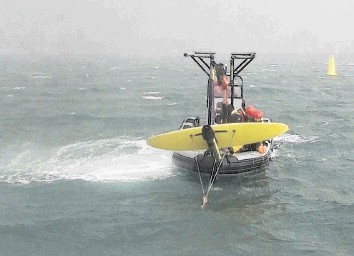
German company Schottel says it has successfully tested its hydrokinetic turbine design in Strangford Lough, Northern Ireland.
The full-scale tests included 260 operating hours under realistic conditions. The results show that one turbine with a rotor diameter of 4m generates 50kW per second at a rated water velocity of 2.75m per second. Ten hours of operation provide enough electricity to supply an average household for a month.
The Strangford Narrows, Northern Ireland is a strait between the virtually land-locked Strangford Lough and the Irish Sea and features strong tidal currents.
It offers an ideal testing environment for tidal turbines. Due to the long period of testing, the recorded data include a large number of tidal cycles with highly turbulent current conditions.
For the trial Schottel attached the turbine with a rotor diameter of 4m to a moored barge. It was mounted on a lifting frame at the stern and lowered down into the operating position for testing.
Additionally, the barge was equipped with a large range of measurement devices and sensors to monitor the test results: The turbine shaft rotations, torque and power output were recorded for use in the performance assessment. Load cells measured the resulting thrust force, while detailed measurements of flow conditions were also taken.
German company Schottel says it has successfully tested its hydrokinetic turbine design in Strangford Lough, Northern Ireland.
The full-scale tests included 260 operating hours under realistic conditions.
The results show that one turbine with a rotor diameter of 4m generates 50kW per second at a rated water velocity of 2.75m per second. Ten hours of operation provide enough electricity to supply an average household for a month.
The Strangford Narrows in Northern Ireland is a strait between the virtually land-locked Strangford Lough and the Irish Sea and features strong tidal currents.
It offers an ideal testing environment for tidal turbines. Due to the long period of testing, the recorded data include a large number of tidal cycles with highly turbulent current conditions.
For the trial Schottel attached the turbine with a rotor diameter of 4m to a moored barge. It was mounted on a lifting frame at the stern and lowered down into the operating position for testing.
Additionally, the barge was equipped with a large range of measurement devices and sensors to monitor the test results: The turbine shaft rotations, torque and power output were recorded for use in the performance assessment. Load cells measured the resulting thrust force, while detailed measurements of flow conditions were also taken.
Recommended for you
